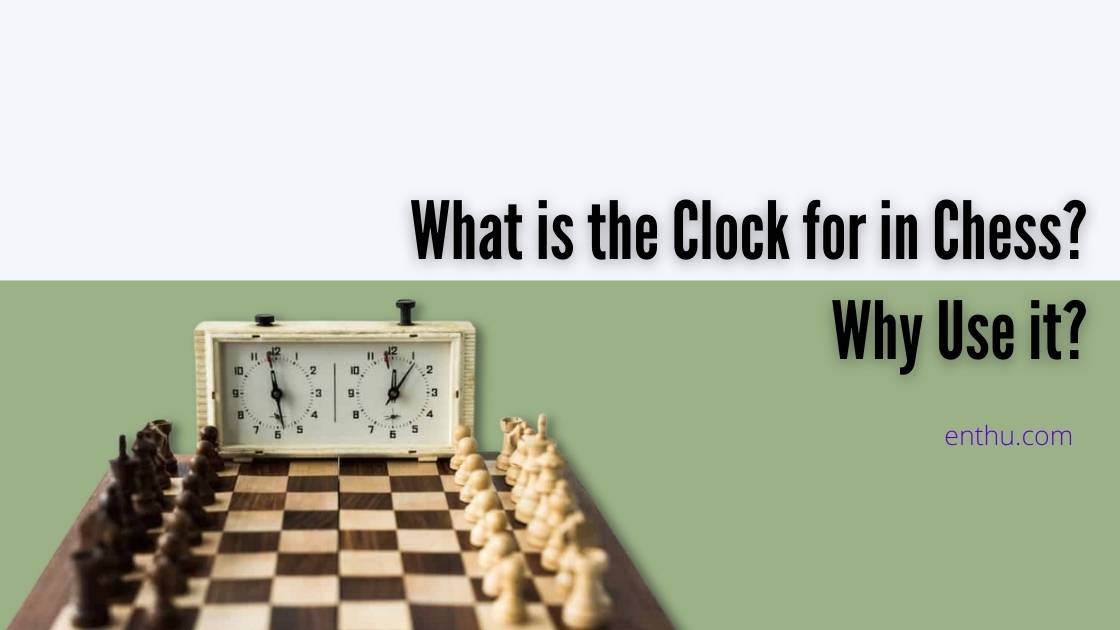Gone are the days when a game of chess went as long as 10 hours or, sometimes, even longer than that.
The chess community has evolved dramatically from its history of longest chess matches. At present, thanks to chess clocks, there are rapid games, blitz, and many more time-constraining chess games.
So, as a chess player, one must know what is the clock for in chess. Let’s dive into it.
What is a Chess Clock exactly?
Chess games take place within a given time for each player. A clock is provided for each match to keep track of the given timing.
Take a look at the clock in the image below.
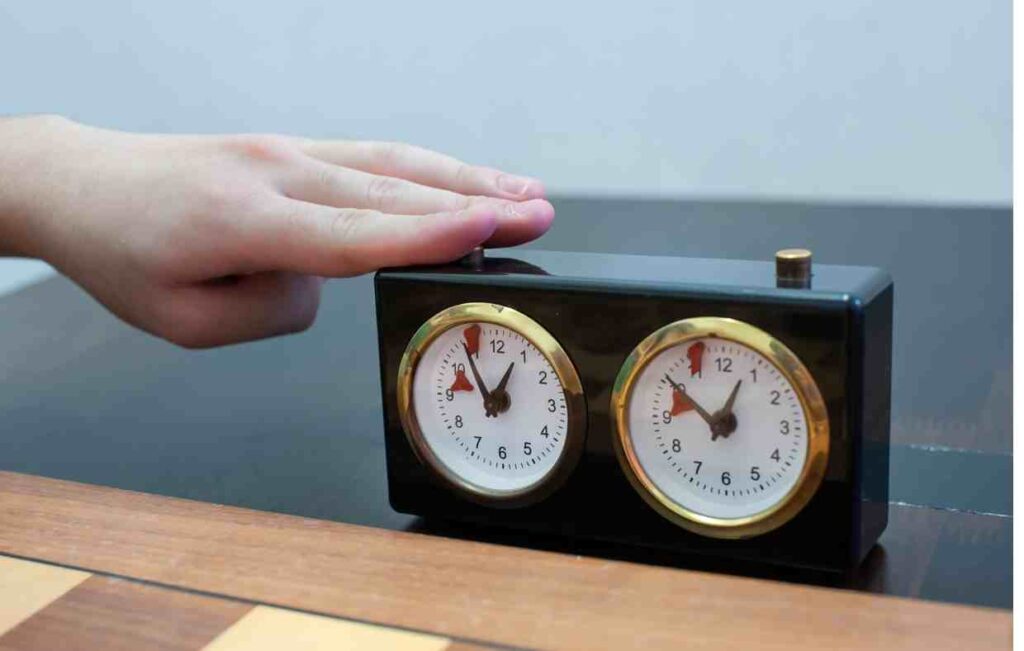
A clock for chess is made of two connected clocks. The specialty is that when one clock works, the other stops.
Currently, chess players use both analog and digital clocks. Here’s a video on how to operate a chess clock.
Read The Shannon Number to find out.
Role of Clocks in Division of Chess Games
In the history of chess, at one point, there was only one type of chess. The regular chess game with no time limit or draw rules. Before the 16th century, there weren’t even basic rules such as the Castling or En Passant.
Although everything was fine in chess, and it was the most popular board game, sometimes, the games went on for two or three days or more. Introducing the clock in the chess game was one of the many ways to speed up the game and make it even more thrilling.
What is Time Control in Chess?
Time control in chess is the time limit within which a player has to play all the moves in a game.
Generally, the time control is simple with time limits such as 10, 30, and so. However, sometimes, time control is more complicated with strange rules. For example, play the first 40 moves within the first hour and then finish the game within the next hour.
Thanks to chess clocks, there are several types of chess games based on time control.
1. Standard/Classical Games
Standard or classical chess games have a time control of 3 or more hours. Games that take place on physical chessboards mostly follow such time control.
There is no fixed time set for this type of chess game. A standard game can vary from 1 hour to 7 hours.
For instance, the FIDE World Championship in 2021 had very complicated time controls.

The first 40 moves were to be completed within the first 120 minutes/3 hrs, the next 20 moves in the next 60 minutes, ending with another 15 minutes to finish the game.
Not to forget, there was an increment of 30 seconds per move starting on move 6.
2. Rapid Game | 30 Minutes Time Control
Any chess game with more than 10 minutes of time for each player to think is called a rapid game. The most popular time control for this type of game is 15 minutes.
On chess.com, one can customize the time limit as per their choice. Therefore, a rapid chess game can vary from 15 minutes to 60 minutes.
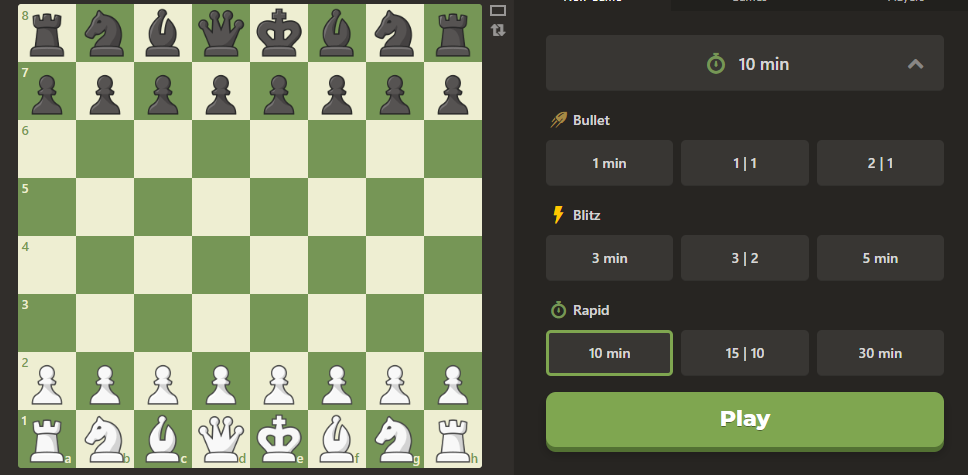
3. Blitz Game | 5 Minutes Time Control
A game with a control set between 3 to 10 minutes for each player is called a blitz game. The most popular time control for this type of game is 15 minutes.
On chess.com, one can customize the time limit as per their choice. Therefore, a rapid chess game can vary from 15 minutes to 60 minutes.
4. Bullet | 3 Minutes Time Control
Bullet chess games have a time control of fewer than three minutes. The most popular bullet time controls are 1 and 2 minutes.
Like other games mentioned above, bullet games are also customizable. Therefore, some players also go for 30 seconds of time control.
Read Checkout “Dutch Defense: Chess Opening Strategy” to find out.
Terms Related to Time Control & Clock
1. Sudden Death
It’s a time control in which chess players must make a given number of moves in the given time or leave the game immediately.
Blitz chess is an excellent example of sudden death.
2. Simple Time/Delay
It’s a chess timing method in which each player is given a certain amount of time to make each move. Only when they exceed that given time when playing a move does the clock of their main time start ticking.
3. Bonus Time
Bonus or increment time is an amount of additional time added to a player’s allotted time after every move.
For instance, if the time control is “15|2”, then the main time for each player is 15 minutes with a bonus of 2 seconds.
In simpler words, they get an increment of 2 seconds added to their main time after each move.
As Bobby Fischer took the patent on this idea, bonus time is often referred to as Fischer time.
4. Bronstein Time
Bronstein delay or time is mostly applied to the first move. According to this timing method, if a player delays for a certain amount of time, that time adds up to their basic time.
For instance, if the player makes a move in 10 seconds, then 10 seconds is added to their main time after the move.
The legendary David Bronstein invented this timing method.
History | How Game Clocks Became Chess Clocks
A game clock is a double-faced, tumbling mechanical clock specifically built for two-players games such as chess, shogi, scramble, and go. It has built-in two adjacent clocks in which one clock stops when the other is functioning.
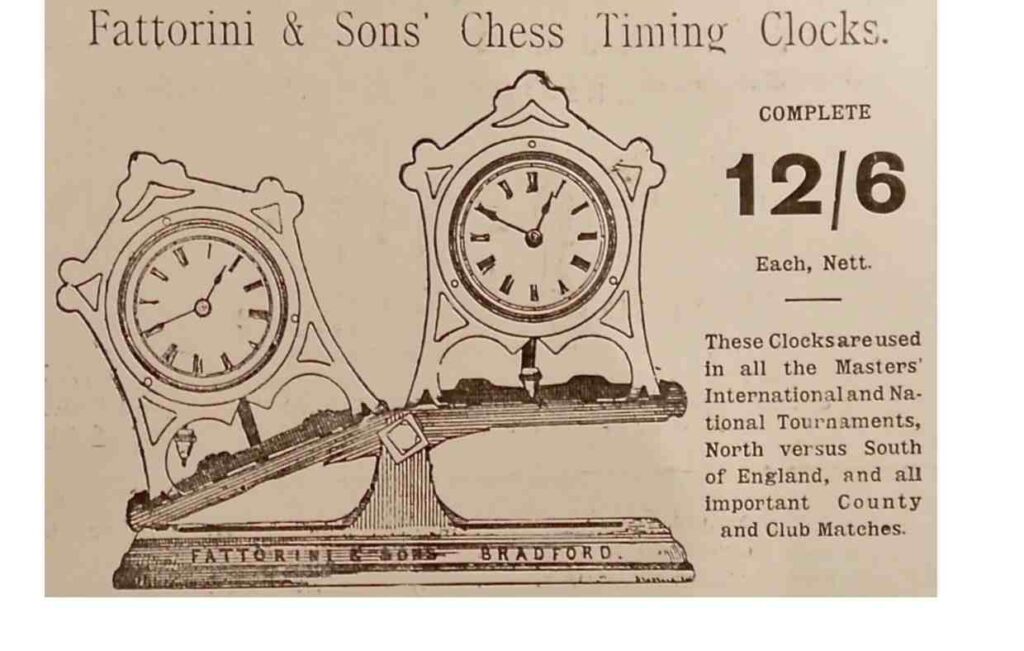
The first time a mechanical game clock was used in a professional game was a chess tournament in London in 1883. Thomas Bright Wilson of Manchester Chess Club invented a mechanical chess clock. Prior to its invention, chess players used sand glasses or separate clocks.
Over the course of time, the game clock came to be known as the chess clock because of its extensive use by chess players.
Different Types of Game Clocks
1. Sand Glasses
Sand glasses were used as clocks for chess before the invention of mechanical game clocks in 1883.

In this time-tracking method, the upper and the bottom of the sandglass are allotted to each player. Suppose black is making a move, then the black’s side of the sandglass will be on top, and when it’s white’s turn, it will be turned upside down.
The player who runs out of sand first forfeits the game immediately, making their opponent the evident winner.
2. Analog Clock

The analog chess clocks were used from the invention of the game clock till the introduction of the digital ones.
These types of clocks are similar to the regular ones we hang on the wall. They have an hour and minute hands.
The unique feature of an analog clock is a red flag between 11:00 and 12:00 (in each clock). When the minute hand comes close to 12:00 and touches the flag, it moves to a horizontal position.
The flag drops when the hand reaches 12:00 once again. Checkout this video to learn how to use classic analog chess.
3. Digital Clock
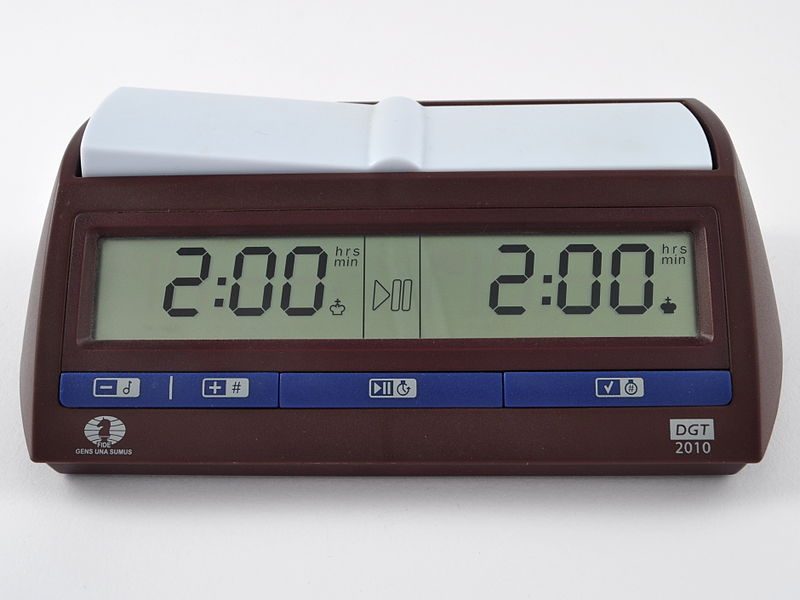
Digital clocks are like timers; they count down the main time. The players need to forfeit games if the time on their clocks reaches 0:00.
Here’s a video on how to operate digital chess clocks.
FAQs
Is it worth buying a chess clock?
Yes, buying a chess clock is a must if you want to pursue a career in chess or become a professional player. Be it playing in a tournament or receiving proper chess training, chess clocks are a piece of essential equipment.
Which clock should I buy? Analog or digital?
While analog clocks work just fine for chess games, digital ones are the most preferred ones. One of the reasons is that digital chess clocks countdown the basic time, and it’s easier to follow, unlike their analog counterparts. Another reason is that analog chess clocks need a lot of winding, which makes them difficult to operate.
What clocks do they use in chess tournaments?
They use both analog and digital chess clocks. Earlier, chess players used hourglass in tournaments and competitive chess.
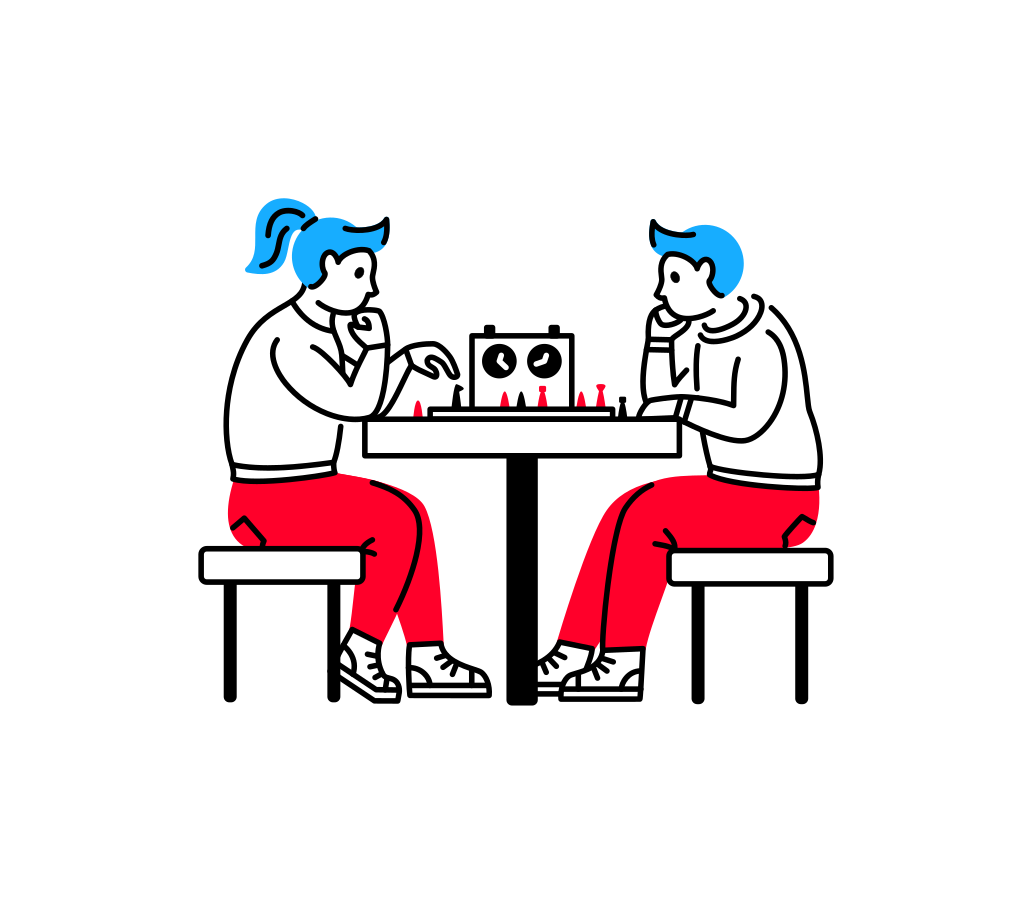
Learn Chess From Expert Teachers
Conclusion
Dear readers, it’s a must to understand why and how chess clocks are used in chess games. Remember, time is an important factor in winning chess games. Be it rapid, blitz, or bullet, you must practice pulling your moves within the given time.
All the best for your upcoming tournaments!

